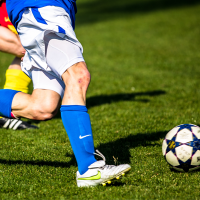Exposing Shin Splints

One of the harshest and most painful injuries that people suffer from are shin splints. While a relatively minor injury that does not involve surgery to correct, it does require plenty of rest and careful training to help prevent the injury from becoming worse. Taking a few minutes to acquaint yourself with shin splints and how they are caused can help you to avoid these painful little injuries and ensure that you are not suffering downtime because of them. A shin splint in its simplest form is […]
More info

